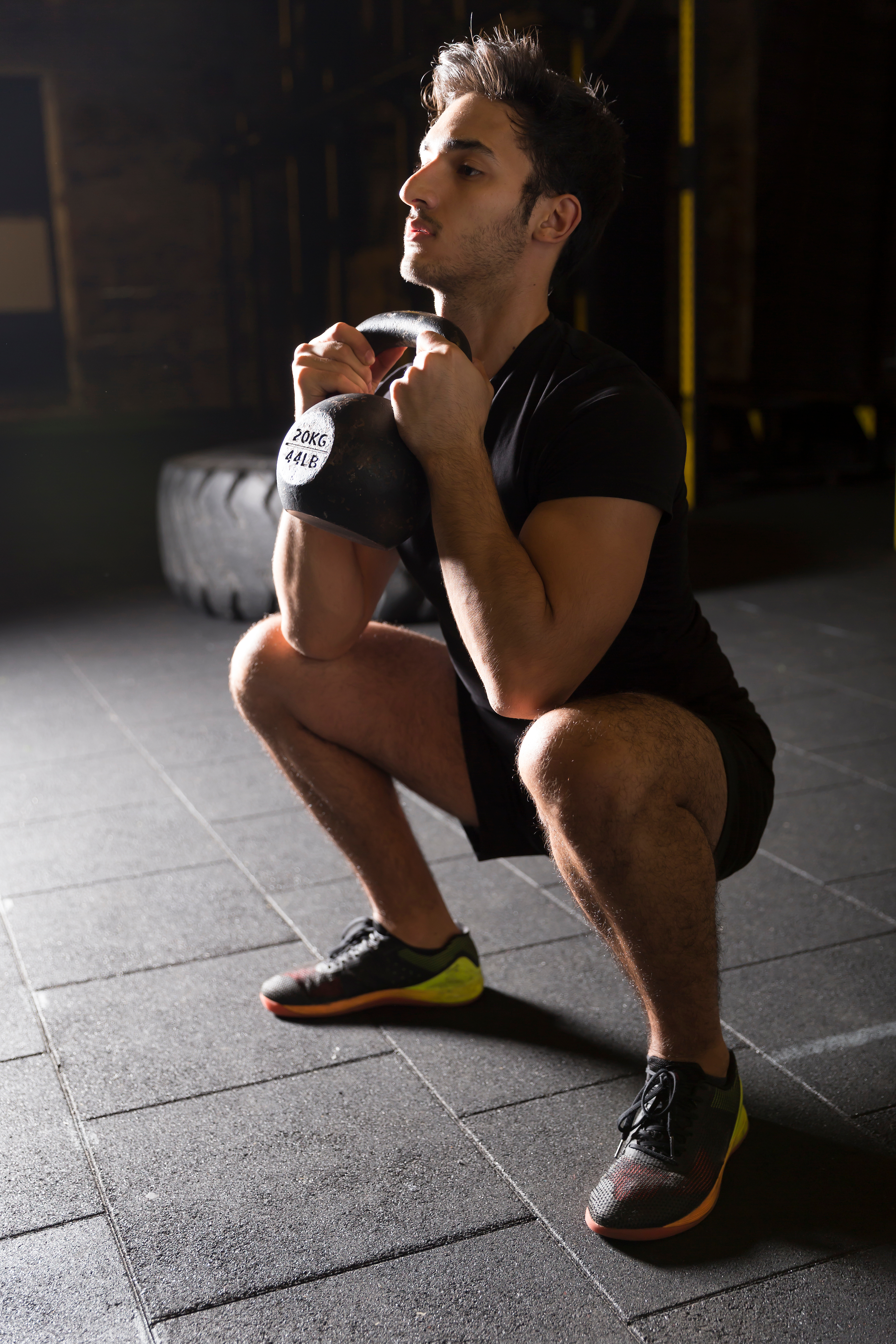The body must be resilient to be a good runner and one of the things that can help build resilience is strength training. Runners who get injured frequently have problems with their level of strength especially in certain muscle groups. Running is a catabolic activity and thus has the tendency to decrease muscle mass. Anything that causes a person to lose muscle mass will cause them to get weaker.
Resistance training is often overlooked as a factor at improving performance in all endurance athletes, including runners. Proper strength training is a wonderful thing to help you get faster, recover better from injuries, prevent overuse injuries and reduce muscle imbalances. But resistance training and improving strength can specifically help runners by improving various aspects of competition like hill climbing, catching someone, breaking away from a group and the final sprint. It’s been shown that strength endurance training, explosive resistance training and heavy resistance training all improve running performance. The type of training will depend on the programming, which is the exercises that a person chooses, and the number of sets, reps and rest time utilized.

Most people have heard of bodybuilding and hypertrophy (increasing the size of muscles). Understandably, added mass is not desirable for runners as it would weigh you down and would tire you out faster during a run. There are specific ways to train for hypertrophy and you must eat a lot of calories to gain size, but many people have a misconception that lifting weights will make them excessively bulk up. But you can increase your strength and endurance without becoming a bodybuilder.
Now, there are certain things to realize about each of the different types of resistance training. The sets, reps and rest that I have cited above apply more to people who are trained. Beginners will improve a certain degree in muscular strength, power, endurance and hypertrophy no matter what they do. Also, there is often a need or desire to make improvements in multiple different areas simultaneously, but effort should be made to concentrate on only one goal per time frame. That means that you can’t really increase strength endurance and maximum strength at the same time. This is especially true when someone is also focusing on maintaining their aerobic capacity and conditioning. But with that in mind, it is typically easier to gain when working on endurance, hypertrophy and power when one has already increased their maximum strength. This would be why it is important to try to increase your levels of strength in the off-season by strength training in a different way. Because when one is training for pure strength, you are trying to increase the ability of the body to be able to lift an object. In running, that object is the body, so becoming stronger will allow you to lift your bodyweight more easily. Being able to lift it more easily can also allow you to lift it more quickly, which would allow you to increase your speed.
Types of Strength Training
There are generally four different goals when resistance training the body: hypertrophy, maximum strength, power (explosive strength) and endurance. Heavy resistance training allows a person to gain maximum strength and lift a lot more weight. Training for power is to train for explosive types of movements and is great for many team sports, like basketball and football. This consist of exercises like the clean, jerk & snatch as well as plyometric exercises like the box jump. People often think of powerlifting as being the same thing as training for power, but it is a misnomer from a scientific and biomechanics perspective. Powerlifting is training for strength and Olympic weightlifting is an example of training for power. The last one is training for strength endurance which is going to be the goal of most runners and is the ability to produce strength over an extended period of time.
Training for maximum strength typically is doing 2-6 sets with the less than 6 repetitions per set with rest periods that are 2 to 5 minutes between sets. Power involves doing 3-5 sets with 1-5 reps per set with 2 to 5-minute rest periods. Resistance training for hypertrophy involves doing 3 to 6 sets with 6 to 12 reps per set and a rest period of 30 seconds to 1.5 minutes. Training for strength endurance typically uses 2 to 3 sets with greater than 12 reps per set and a rest period of less than 30 seconds between sets. The sets listed do not include warming up for the exercise. Another factor that affects programming is the frequency of training.
| Type | Sets | Reps | Rest |
| Strength | 2-6 | <6 | 2-5 min |
| Hypertrophy | 3-6 | 6-12 | 0.5-1.5 min |
| Power | 3-5 | 1-5 | 2-5 min |
| Endurance | 2-3 | >12 | <30 sec |
Types of Exercises
What exercises should you do to maximize your efforts when your goal is maintaining your strength? There are more exercises to choose from than supplements in a health food store. One common method is to look at the main movements that a body does. The legs can squat, hip hinge and run/walk, the arms can push & pull, while the core helps to maintain trunk position. There are multiple variations of squats to include back squats, goblet squats, pistol squat, and front squats. Hip hinging is bending forward at the hips only without flexing your lower back and is performed in a deadlift, clean, snatch, good morning and kettlebell swing. Pushing exercises for the upper body consist of bench press, incline press, overhead press and push-ups. Upper body pulling exercise consist of rows, lat pulldowns, chin-ups and pull-ups.
Everything above is the set-up for understanding strength training. Because your goal will be to maintain strength endurance, you would select between 2 to 3 sets with 12 to 15 reps per set and resting for 20 to 30 seconds between sets. Beginners would want to lean toward doing less sets and having more rest between sets. You need to decide if you would like to focus on bodyweight, dumbbells, barbells or kettlebells for your exercises. You also need to consider your access to this equipment because if you cannot afford a gym membership, then you would need to stick to bodyweight exercises or buy a kettlebell. And then buy a heavier one when you get stronger.
For a beginner endurance athlete, stick to the easier to learn exercises and consider hiring a personal trainer to help you learn the more complex exercises for resistance training. This is probably most important for the hip hinge exercise as it is a hard movement for many people to learn. You are going to pick one exercise from each of the exercise categories: squat, hip hinge, push & pull. An example of exercises would be back squat, single-leg deadlift, push-ups and pull-ups. Or goblet squat, kettlebell swing, kettlebell overhead press and renegade row. It is important to switch up the exercises every 8 to 12 weeks or so, otherwise your body will adapt, and you won’t be using time efficiently. You can change up the exercises or switch from bodyweight to barbells or something similar. You can obviously increase the weight as you get stronger as well.

Strength training should be performed 2 to 3 times per week during the running season. Exercise can be done in groups of sets and reps like it is listed above. You can also do circuit training if desired by performing the exercises immediately one after another. So, you would perform 20 goblet squats, 20 kettlebell swings, 15 overhead presses and get down to do 15 renegade rows per side. Then you could rest for one minute and repeat the exercises. This is just one example, but you can see that this will not take too much time. Core work could be added into the mix with holding planks and the like or you could do the core work on days that you run.
Take a look here for more examples of strength programming for endurance athletes.
Article Featured in Toledo Roadrunners Club Footprints – Volume 45, Issue 8 (August 2019)
